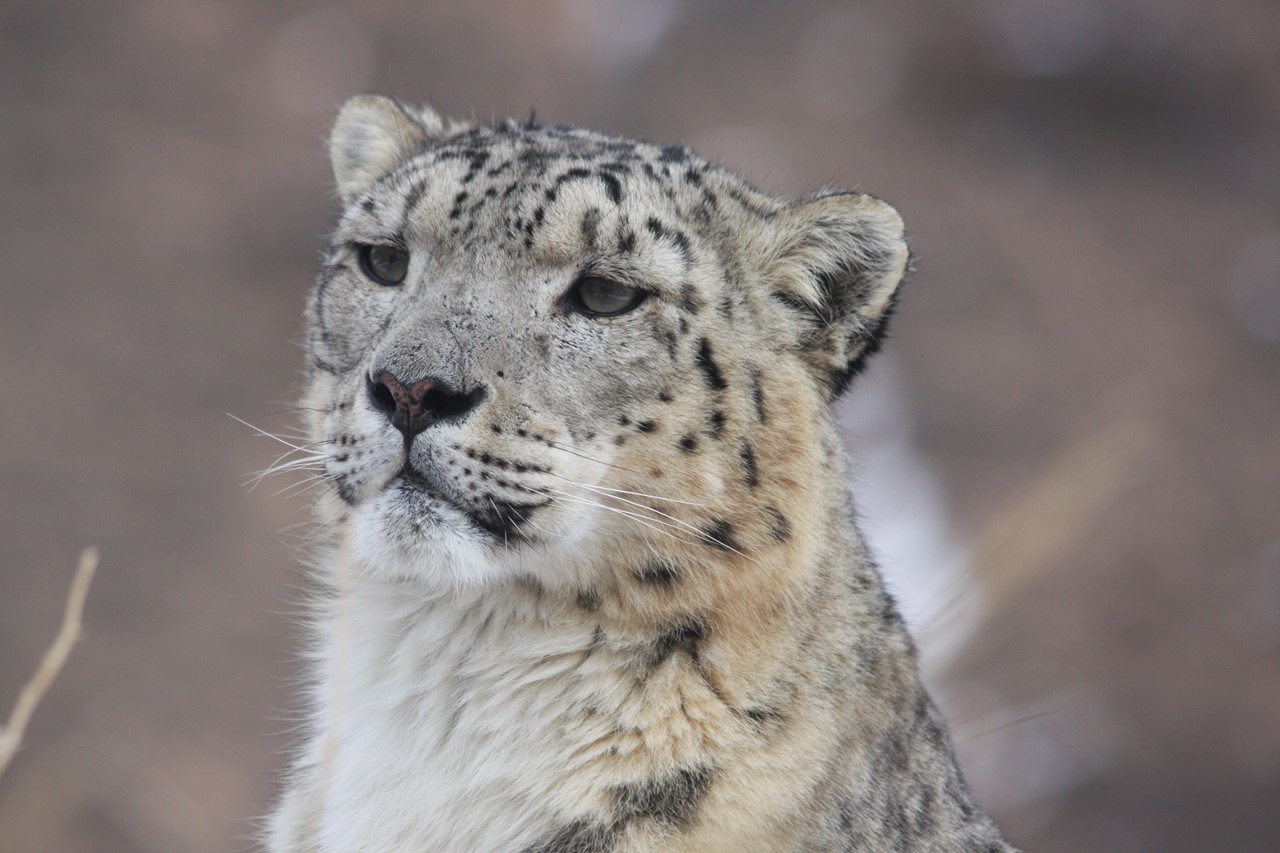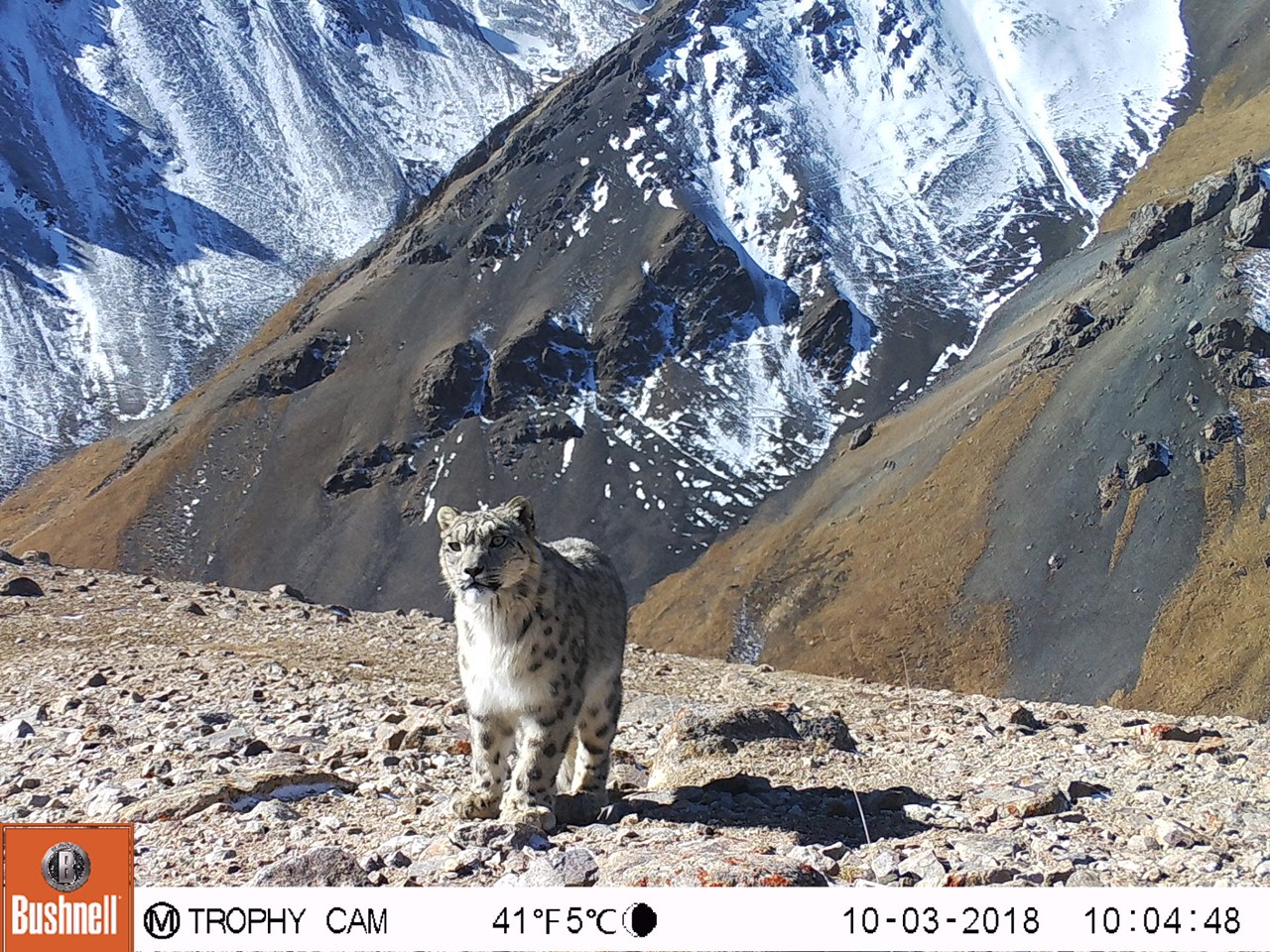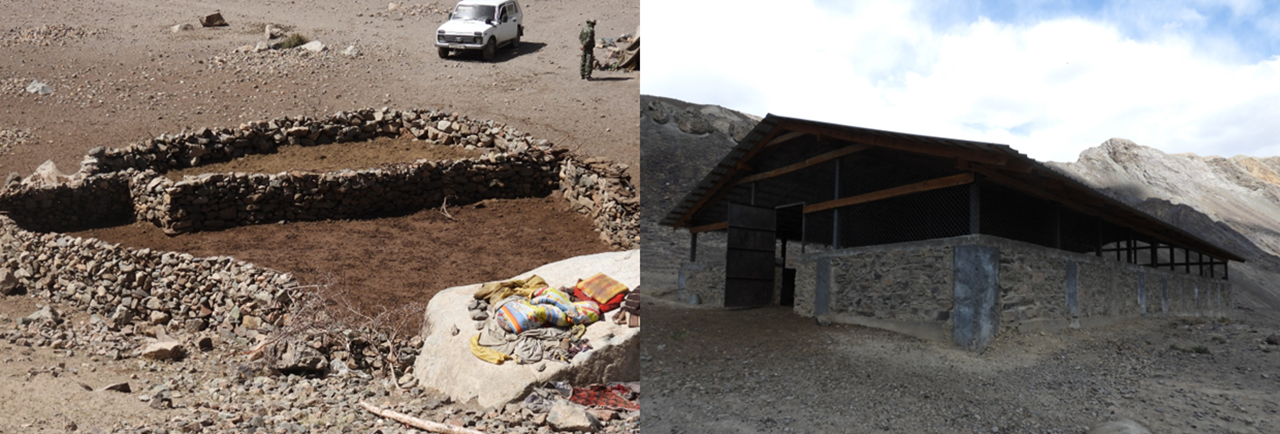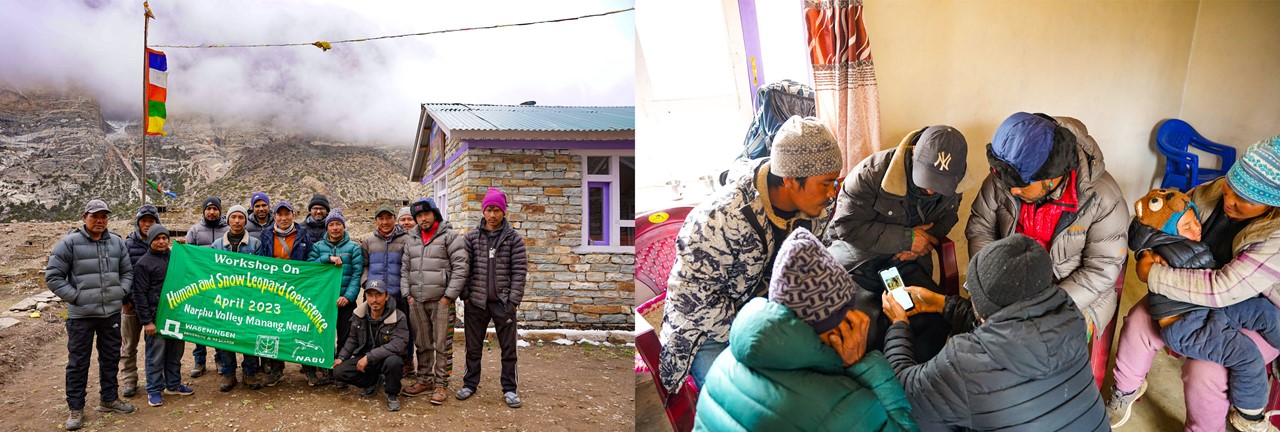< Back To Newsroom
Keeping snow leopards on top of the world
January 01 2024
It is estimated that not more than 4,000–6,400 adult snow leopards exist in the wild today, but no one can estimate the population with much confidence. Although a protected species in all 12 countries where the cats are known to occur, a common impulse among high-altitude herders upon seeing a snow leopard would be to shoot to kill.
Nimble and fleet of foot whether among deep snow or stony crags, its thickly-furred coat adjusting colour to mimic a seasonally changing landscape, the snow leopard solitarily haunts the highest mountain peaks of Central Asia. Known almost legendarily as the “ghost” or “spirit” of the mountain, this big, beautiful, elusive cat and proficient predator is rarely seen by human beings.
And that is a very good thing. Indeed, the more seldom these cats are sighted the better for all those concerned.
Snow leopards prefer to prowl their cold and snowy, thin-aired terrain that is inhospitable to humans. They have no interest in people and their communities and possessions when all is well near the mountain peaks.
Nevertheless, yet another reason that these least understood and most endangered of the world’s large cats are so infrequently spotted is that their population has greatly dwindled in recent decades due to illegal hunting, preventive and retaliatory killing by mountain herders, and shrinking of the animals’ natural habitat and food supply.
It is estimated that not more than 4,000–6,400 adult snow leopards exist in the wild today, but no one can estimate the population with much confidence. Although a protected species in all 12 countries where the cats are known to occur, a common impulse among high-altitude herders upon seeing a snow leopard would be to shoot to kill.
That is tragic but not altogether surprising, explains Ivan Tymofeiev, Deputy Team Leader of the Central Asia and Eastern Europe Programme for Naturschutzbund Deutschland (NABU, The Nature and Biodiversity Conservation Union), Germany’s largest and oldest environmental organisation. NABU has been working for more than 20 years to protect these animals and their habitat.

© Svetlana Laptiva
People, wildlife, and livestock must co-exist
Local people’s near instinct to slay these beautiful cats is illustrative of how protecting the animals must very directly involve their nearest human neighbours. Among typical herders in the mountains of Central Asia, Ivan explains, the vast majority of a family’s net worth and its very livelihood consist in their sheep and goats or other livestock.
“The most dangerous for the herders is when a snow leopard comes and kills all of the herd,” he relates. “That could be 50, 100 or even 200 animals. When the corrals are not predator-proof, and if the snow leopard can find a way to get in, this generally means that there will be an almost 100% loss – all the animals will be dead. That is a big danger for the local communities, because these livestock are like a bank account for them. Their animals are the means by which the herders live and survive and provide a future for their children and future generations.”
“Human–wildlife conflict” is the name conservationists give to these dangerous interactions between wild carnivore and human civilisation. The best thing is to avoid these contacts altogether. The second-best thing is to manage the potential for conflicts.
In co-operation with its partner organisations, local governments, and mountain communities, NABU is working to implement some solutions. These necessarily include a mix of activities. Very important and effective are to provide materials and assistance so that herders can make the corrals for their animals impervious to leopards, as well as to offer indemnity programmes that compensate families for their losses when these do occur.
Other aspects of conservation include anti-poaching laws and their rigorous enforcement to protect both the animals themselves and their prey species; eco-education to improve people’s understanding of the animals, their behaviours, their place in the ecosystem, and their value; community-based grazing and wildlife management; as well as scientific study and non-invasive monitoring of snow leopard populations and populations of the animals upon which they naturally feed.
But the spirits of the mountains are threatened, too, by forces much bigger than the very mountains themselves – things over which no herder or local law enforcement official has any control. Climate change, Ivan explains, is perhaps the greatest danger of all. Just as the world’s icebergs, glaciers, and polar caps are melting, he says, so also is snow on the mountaintops. That makes snow leopards even more vulnerable because it is shrinking the habitat within which the animals live. Ivan laments that, unfortunately, not nearly enough is being done worldwide to slow or reverse climate change.

© NABU Kyrgyzstan
Protection requires a multi-pronged approach
NABU, which was itself founded in 1899, has had a branch in Kyrgyzstan for more than 30 years. Conservation of snow leopards was a major priority there for the organisation from the very beginning, but NABU’s work in Central Asia extends also to protecting mountain landscapes generally from climate change and human land use. Naturally, all these aspects are interrelated.
Considerable progress has been made in Kyrgyzstan. In the 1990s, poaching was a major problem and one of NABU’s first efforts was to establish an anti-poaching unit, the local name of which (Gruppa Bars) means “Team Snow Leopard”. In addition to policing, Ivan relates that today Gruppa Bars works in eco-education, assists in scientific monitoring and study of the snow leopard population, and serves as an organisation to which herders can turn for help when they see that a snow leopard is coming too far down the mountain and endangering their animals and livelihoods.
VGP Foundation has taken a strong interest in NABU’s work and in protecting snow leopards. The Foundation’s first financial support in this area went towards building a snow leopard rehabilitation and environmental education centre in Kyrgyzstan. The centre, which opened in 2021, provides veterinary treatment and care for snow leopards that have been injured, typically because they have been shot or captured in a leg-holding trap. If possible, rehabilitated leopards will be released back into the wild. So far, though, Ivan notes, there are not many good and successful examples of releasing snow leopards back into the wildness.
Predator-proofing corrals is crucial
In neighbouring Tajikistan, VGP has supported NABU and its local partner, the Association of Nature Conservation Organizations of Tajikistan (ANCOT, now the Tajik Nature Foundation), in planning and implementing two very effective approaches to preventing and managing human–wildlife conflicts: construction of predator-proof corrals and stables and implementing an insurance system against herders’ losses to snow leopards.
Ivan explains that most losses occur when a leopard is able to enter a corral or stable where the animals are kept for the night. Attacks are rare during the daytime when the livestock are grazing in open pastures. Sometimes, the predation of corralled animals is by older leopards that are unable to hunt effectively. The attacks increase during autumn and winter when marmots (a type of large ground squirrel) go into hibernation because they constitute an important prey.
Very often, corrals are constructed of little more than stones piled upon one another or even of wooden branches woven loosely together. To be predator-proof, however, a corral or stable must be fully enclosed by strong and tall walls and it must have an impenetrable roof or other cover. Typically, herder families and communities simply cannot afford to erect such shelters.
NABU and ANCOT have come in with woven-wire fencing and other materials and assisted to construct the improved corrals and stables or to transform existing ones.
Working within the communities is not so simple, though, as to show up with building materials and big ideas. It takes time, effort, and the right approaches to build understanding and trust, Ivan explains. Whereas in Kyrgyz communities where NABU has been working a long time, the well-intended outsiders may be known and welcomed, in other places, such as remote villages in Tajikistan being visited for the first or second time, the conservation workers must begin by listening and learning in order to understand the people’s cultural and economic interests and fears.

Old corrals vs. reconstructed leopard-proof corrals. © NABU
Implementing an insurance scheme and technology
Simple solutions like woven wire are also combined with new technology. NABU contributes to compensation systems in Tajikistan and Nepal whereby herders are paid indemnities when animals are killed by snow leopards. NABU’s partner organisations are also involved and cooperate with local governments in setting up and administering the insurance systems. The local herders contribute to that system, as well, according to the numbers of sheep or other livestock they have.
Many times, however, herder families live far from administrative centres, which might be reachable only by walking for 3–4 days as there is no other practical transportation alternative. Together with a partner in Nepal, NABU has developed a mobile phone app that herders can use to file remotely the paperwork and provide photographic evidence of losses. NABU is now pursuing an educational campaign with the herders, showing them how to use the app.
This electronic filing, Ivan explains, also has monitoring and scientific benefits. Data are gathered that might otherwise not be collected and this technology facilitates creating a good database of losses.
Science and technology, Ivan says, also are used to learn more about these stealthy cats. For example, camera traps are deployed to monitor the leopards and other animal within their habitat. The cameras can operate day and night using infrared imaging. With today’s powerful computers and even emerging artificial intelligence, he notes, hundreds of thousands of images per hour can be analysed. Sometimes, the local people can be involved also in citizen science projects.
“When we know this animal better,” Ivan remarks, “we also can protect it better.”

Workshop on Human and Snow Leopard Coexistence 2023. Nepal. © NABU
Humans must work to find and build harmony
It would be easy to be pessimistic about the prospects for these spirits at the top of the world in Central Asia, but Ivan and his colleagues, not unlike herders tending their livestock in harsh conditions, need reasons to be optimistic.
For Ivan, positive thinking is inspired in part from realising that there are other people in this world devoting their lives to the science and protection of these animals. There exists a community of people, of conservationists, who want to protect the ecosystem and help to avoid and manage human–wildlife conflicts.
“After you meet this kind of people,” he says, “you understand that if there are such people existing then this animal still has some chance. The conservation and development of natural resources and the improvement of people’s living conditions should not be contradictory.”
This article was prepared by Gale A. Kirking, Editor-in-Chief at English Editorial Services, s.r.o.
Gallery
Photos © NABU